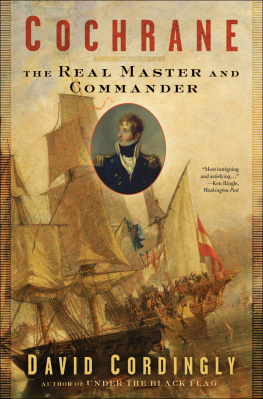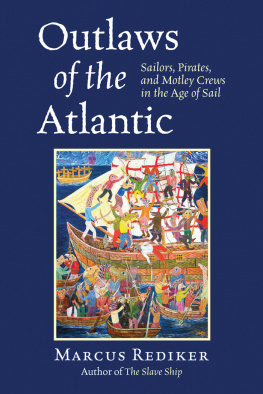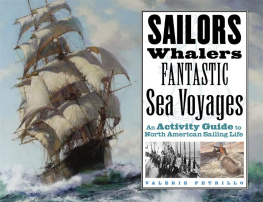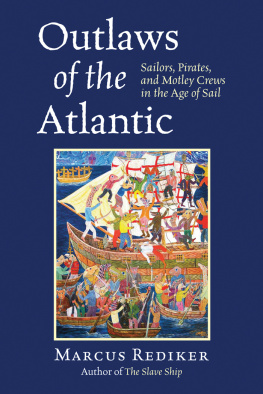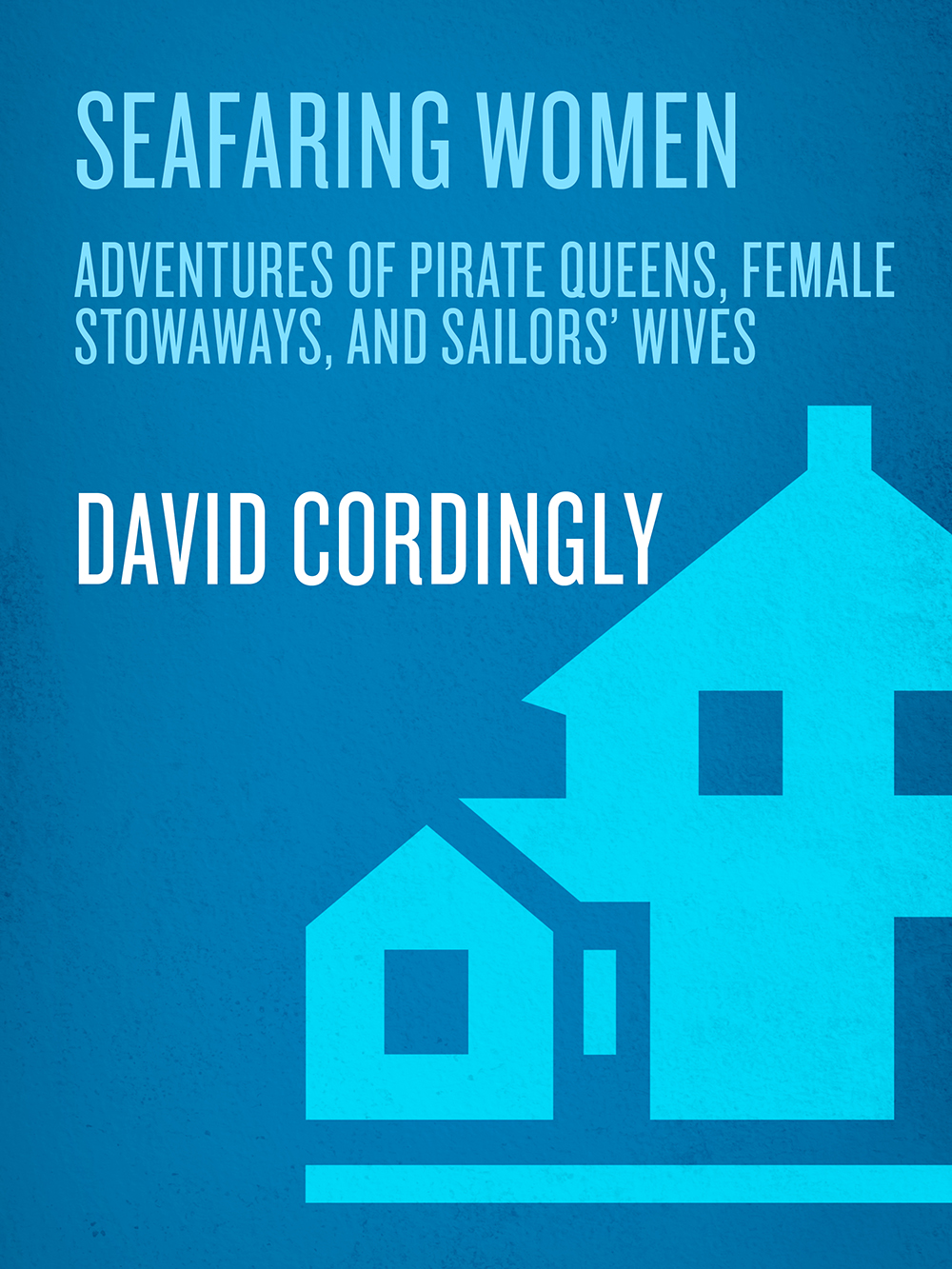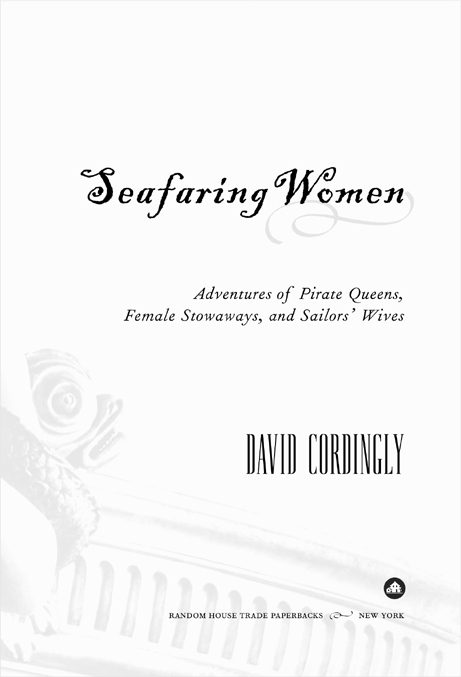Praise for
Seafaring Women
A distinguished nautical historian provides an absolutely fascinating glimpse into the lives of the intrepid women who went to sea during the great age of sail; the result is a significant contribution to women's history as well as an excellent adventure read.
Booklist (Top 10 Literary Travel Books)
Of broad interest and appeal Cordingly conveys many colorful details of everyday life and depicts many of the economic and social mores of the time.
Associated Press
Revisionism at its most delightful If there's any Big Message here, it's that long before most women dreamed of being treated as men's equals, certain women were driven by high ideals, courage, curiosity, chance, gender confusion, lust, greed, dementia or desperation to invade the world of seagoing men. They found there a place to alternately escape and excel.
Houston Chronicle
Engaging [Cordingly's] accessible style, combined with his enthusiasm for a subject that has enduring appeal, makes for enjoyable reading.
Cleveland Plain Dealer
Vivid and fun Cordingly clearly knows something of the lives of sailors; his knowledge, interest, and good research are evident.
Bookpage
A highly entertaining and informative account of females in a predominantly male world.
Fredericksburg Free Lance-Star
Scholarly in its depth of detail, and useful to anyone interested in the topic of women and the sea, it's also a thoroughly delightful read.
Cape Cod Times
Vivid and fascinating a dynamic and inviting look into the lives of British and American women of the water a captivating story no one interested in women's history, community psychology, or maritime studies will want to be without. An exceptional academic feat.
Critique
INTRODUCTION
From earliest times the sea has been regarded as a male domain. Fishermen labored around the coasts with nets and lines while their wives stayed on shore to mind their homes and bring up their children. Later explorers and adventurers set sail across the oceans in search of new lands hoping to make their names and their fortunes from their discoveries. The crews of their ships, as well as the crews of the hundreds of thousands of merchant ships and warships that would follow in their wake, were always male. Or were they?
Recent studies have shown that a surprising number of women went to sea. Some traveled as the wives or mistresses of captains. A few were smuggled aboard by officers or by seamen of the lower deck. An increasing number of cases have come to light of young women dressing in men's clothes and working alongside the sailors for months and sometimes years on end. In 1807, Lieutenant William Berry of HMS Hazard was charged with committing the unnatural and detestable sin of sodomy with a boy in the crew.1 One of the principal witnesses at the court-martial was a fourteen-year-old girl from Cornwall named Elizabeth Bowden. She was listed on the books of the Hazard as a boy of the third class and appeared in court dressed in a long jacket and blue trousers. It had taken her shipmates six weeks to discover her sex, and when they did so, the captain of the Hazard gave her a separate apartment to sleep in and allowed her to remain on board as an attendant to the officers. Hannah Snell, the most famous of the female sailors, spent four and a half years serving in the army and the navy as a man in the 1740s and astonished her companions when she finally decided to reveal that she was a woman.
It is equally surprising to find that it was common practice in the British Navy and not unusual in the United States Navy for the wives of boatswains, carpenters, and cooks to go to sea on warships. They acted as mothers to the boys in the crew, and when the ship went into action, they assisted the gun crews and nursed the wounded. Exactly how many ships had warrant officers' wives on board we shall never know, because their presence was not officially acknowledged, but every now and again we learn of their presence in an old seaman's memoirs or in the transcripts of a court-martial. The journals of ships' surgeons are a particularly valuable source of information because they note whether a woman on board has given birth to a baby beside the guns, or whether visiting prostitutes have caused an outbreak of venereal disease among the crew. Captain John Fyffe, commander of HMS Indefatigable, took the unusual step of including women in the set of orders that he drew up for his crew in 1812: The women belonging to the ship are to be permitted to go on shore twice a week on market days. Should they go on any other day, or in any respect act contrary to the regulations of the ship, they are not to be suffered to come on board again.2
In the nineteenth century, a number of the captains of merchant ships took their wives to sea with them, and in several cases the wives had to take charge of the ship when the captain fell ill. Some of these women proved to be truly heroic. Mary Patten was nineteen years old and four months pregnant when her husband collapsed in a storm as they approached Cape Horn. Since no other member of the crew could navigate, she took command of the vessel, a clipper ship the size of the Cutty Sark, and sailed her around the Horn to San Francisco. Equally heroic were the women who looked after the lighthouses. The most famous was probably Grace Darling, who in 1838 helped her father row an open boat through a winter gale to rescue the survivors of a shipwrecked paddle steamer from a rocky outcrop off the coast of Northumberland. She became a national heroine, but her exploits pale into insignificance beside the achievements of the American lighthouse keeper Ida Lewis, who for thirty years looked after Lime Rock light in the harbor of Newport, Rhode Island. During that time she rescued eighteen lives, on several occasions risking death to do so. The U.S. Life Saving Service presented her with its highest award for her unquestionable nerve, presence of mind, and dashing courage.3
This book began as a study of seafaring heroines like Mary Patten and Hannah Snell, but it soon became apparent that there was scope for a wider study. The women's lives were defined by their role in a traditionally male world, so it seemed logical to question the role of the men in that world. What did the sailors think of their women? Did they simply love them and leave them and forget all about them when their ship sailed over the horizon? To what extent did sailors live up to their reputation for having a wife in every port? How does one reconcile the sailor's love of women with the superstition that a woman at sea brings bad luck? And what about all those sailors' stories about mermaids?
This proved to be a vast subject and some of the findings have been unexpected. The usual view of the seafaring man is that once he heads out to sea, he is far too busy to concern himself with women. Mariners' journals are mostly filled with observations on the weather, navigational notes, and the behavior of the ship and the crew. If the mariner is of an inquiring mind, he records unusual birds and sea creatures and the appearance of islands and harbors overseas. We imagine that when he has any spare time at sea, the sailor spends it mending sails, tying knots, making ship models, gambling, drinking, smoking, dancing the hornpipe, or singing sea chanties. In fact, sailors spent, and no doubt still do spend, a great deal of time thinking about women. Many, if not most, of their songs and sea chanties featured women; they decorated their arms and chests with tattoos dedicated to their mothers or sweethearts; they collected souvenirs to take home to their women; and above all they wrote letters to their women. These letters are often heartrending to read and show that the happy-go-lucky sailor was often desperately homesick and wanted nothing more than for the voyage to end so that he could return to his loved ones at home.


